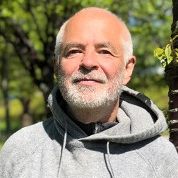Quantum Information and Probability: From Foundations to Engineering
A special issue of Entropy (ISSN 1099-4300). This special issue belongs to the section "Quantum Information".
Deadline for manuscript submissions: closed (31 March 2023) | Viewed by 22364
Special Issue Editors
Interests: quantum information theory; quantum thermodynamics; quantum statistical mechanics; quantum measurement theory; quantum statistics; quantum foundations
Interests: quantum foundations; information; probability; contextuality; applications of the mathematical formalism of quantum theory outside of physics: cognition, psychology, decision making, economics, finances, and social and political sciences; p-adic numbers; p-adic and ultrametric analysis; dynamical systems; p-adic theoretical physics; utrametric models of cognition and psychological behavior; p-adic models in geophysics and petroleum research
Special Issues, Collections and Topics in MDPI journals
Special Issue Information
Dear Colleagues,
The quantum information revolution has large, foundational impacts on theories and experiments, and recently also on engineering. We invite all kinds of contributions devoted to quantum theory, experiments, and engineering, especially to foundational questions with coupling to the quantum information, probability, and measurement theories.
Prof. Dr. Francesco Buscemi
Prof. Dr. Andrei Khrennikov
Guest Editors
Manuscript Submission Information
Manuscripts should be submitted online at www.mdpi.com by registering and logging in to this website. Once you are registered, click here to go to the submission form. Manuscripts can be submitted until the deadline. All submissions that pass pre-check are peer-reviewed. Accepted papers will be published continuously in the journal (as soon as accepted) and will be listed together on the special issue website. Research articles, review articles as well as short communications are invited. For planned papers, a title and short abstract (about 100 words) can be sent to the Editorial Office for announcement on this website.
Submitted manuscripts should not have been published previously, nor be under consideration for publication elsewhere (except conference proceedings papers). All manuscripts are thoroughly refereed through a single-blind peer-review process. A guide for authors and other relevant information for submission of manuscripts is available on the Instructions for Authors page. Entropy is an international peer-reviewed open access monthly journal published by MDPI.
Please visit the Instructions for Authors page before submitting a manuscript. The Article Processing Charge (APC) for publication in this open access journal is 2600 CHF (Swiss Francs). Submitted papers should be well formatted and use good English. Authors may use MDPI's English editing service prior to publication or during author revisions.







